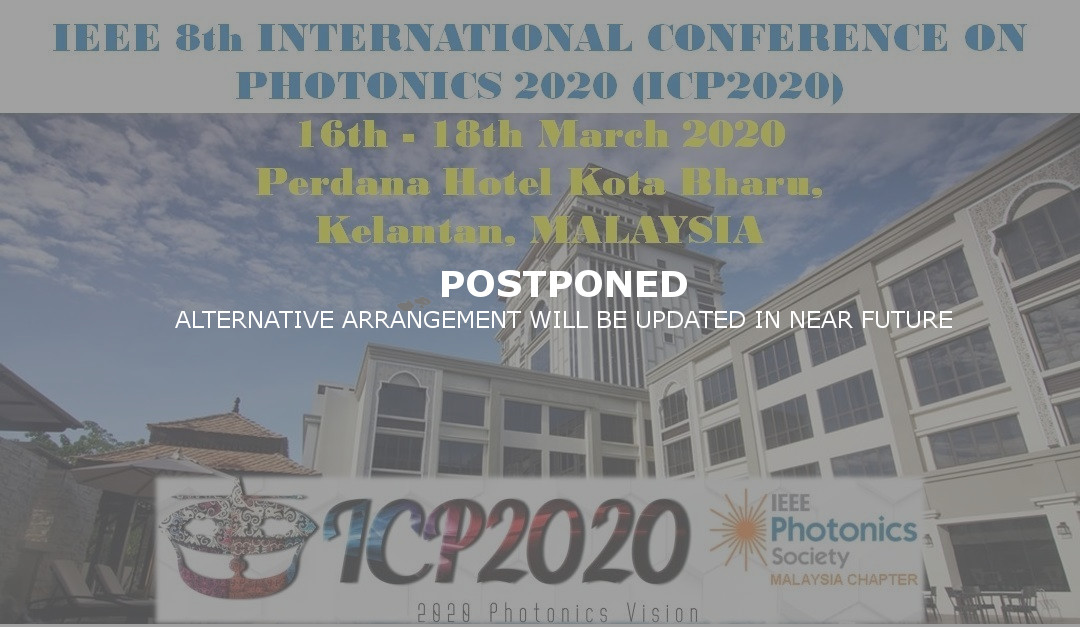
Prof. Yuri Kivshar, Australian National University (ANU) Australia
Meta-optics and metamaterials with resonant dielectric structures
Metamaterials---artificial electromagnetic media that are structured on the subwavelength scale---were initially suggested for the realisation of negative-index media, and later they became a paradigm for engineering electromagnetic space and controlling propagation of waves. However, applications of metamaterials in optics are limited due to inherent losses in metals employed for the realisation of artificial optical magnetism. Recently, we observe the emergence of a new field of all-dielectric resonant meta-optics aiming at the manipulation of strong optically-induced electric and magnetic Mie-type resonances in dielectric and semiconductor nanostructures with relatively high refractive index. Unique advantages of dielectric resonant nanostructures over their metallic counterparts are low dissipative losses and the enhancement of both electric and magnetic fields that provide competitive alternatives for plasmonic structures including optical nanoantennas, efficient biosensors, passive and active metasurfaces, and functional metadevices. This talk will summarize the most recent advances in all-dielectric Mie-resonant meta-optics including active nanophotonics as well as the recently emerged fields of topological photonics and nonlinear metasurfaces.
Biodata
Yuri Kivshar received a PhD degree in theoretical physics in 1984 from the Institute for Low Temperature Physics and Engineering of the USSR Academy of Science (Kharkov, Ukraine). From 1988 to 1993 he worked at several research centres in USA, Spain, and Germany, and in 1993 he moved to Australia where later he established Nonlinear Physics Center at the Australian National University. Yuri Kivshar’s research interests include nonlinear physics, metamaterials, and nanophotonics. He is Fellow of the Australian Academy of Science, and also Fellow of OSA, APS, SPIE and IOP. He received several international awards including Pnevmatikos Prize in Nonlinear Science (Greece), Lyle Medal (Australia), Lebedev Medal (Russia), The State Prize in Science (Ukraine), Harrie Massey Medal (UK), and Humboldt Research Award (Germany).

Prof. Jonathan Knight, University of Bath UK
Making better optical fibers: doing the things that conventional fibers cannot
Conventional optical fibers are a major technological success story, enabling a wide range of applications that we take for granted in modern life. However, there are some applications where conventional fiber designs fall short of requirements. These include the distortion-free delivery of powerful ultrashort optical pulses, low-loss transmission of light at mid-Infrared wavelengths and damage-free transmission of ultraviolet laser light. Alternative fiber designs based on different optical physics and guiding light in an air core can overcome these limitations, and furthermore have the potential to challenge conventional fiber’s record-breaking attenuation levels while being useful in a new family of optical sources. I will review the development of these alternative fibers and the current state of the art.
Biodata
Jonathan Knight gained his PhD from the University of Cape Town and did postdoctoral research at the Ecole Normale Superieure in Paris and at the Optoelectronics Research Centre at the University of Southampton. At the University of Bath he established an optical fiber fabrication capability specifically for fabricating novel forms of optical fiber incorporating air holes, and has used this to develop a number of new and record-breaking forms of fiber. He has also investigated the nonlinear optical properties of some of these new fibers, and has used them in the development of novel light sources. He has published widely, has a Google Scholar h-index of 92, and is a Fellow of the OSA and of the Royal Society. In 2018, he was awarded (with colleagues Russell and Birks) the Rank Prize for Optoelectronics for “the invention and realisation of photonic crystal fibres

Prof. Tetsuya Kawanishi, Waseda University Japan
Wired and wireless seamless for future mobile services
Future mobile services require many base stations which would be connected by various types of transmission media. The radio spectrum congestion can be mitigated by using seamless networks where waveforms for radio services to connect end-users are transferred over optical fibers, millimeter-waves, THz-waves, etc. This presentation overviews of recent research trends of seamless networks including applications in public infrastructure such as airports, high speed rails.
Biodata
Tetsuya Kawanishi (M’06–SM’06–F’13) received his B.E., M.E., and Ph.D. degrees in electronics from Kyoto University, in 1992, 1994, and 1997, respectively. From 1994 to 1995 he was with Panasonic. During 1997 he was with the Venture Business Laboratory, Kyoto University, where he was engaged in research on electromagnetic scattering and near-field optics. In 1998 he joined the Communications Research Laboratory, (now the National Institute of Information and Communications Technology), Tokyo. During 2004 he was a visiting scholar of University of California at San Diego. Since April 2015 he has been a professor at Waseda University. His current research interests include high-speed optical modulators and RF photonics.

Prof. Hairul Azhar, Multimedia University Malaysia
Recent developments in specialty optical fiber
Optical Fibers have now imposed new impact and applications beyond communications. Specialty Optical Fiber, which are usually understood as optical fibers which have at least one special property, distinguishing them from standard fibers have demonstrated applications in imaging, sensing and amplification. We report here some recent developments at Multimedia University, of new materials, structures and fabrication approaches in specialty optical fiber. The presentation will include use of Thulium for optical amplification, Germanium and Phosphorus for radiation dosimetry and Nickel for possible sensing of electromagnetic fields.
Biodata
Hairul is a professor at the Faculty of Engineering, Multimedia University, Malaysia. He is currently serving as the Vice President (Research and Innovation) where he overseas research, innovation and entrepreneurship strategic planning, management and monitoring in the university. He has served MMU for over 22 years in several capacities. Resulting from these research endeavours, Hairul has published 132 peer-reviewed journals and 55 conference papers. He has filed 2 patents and granted 6 Industrial Designs (ID). The research team has collaborated extensively, both nationally and internationally, spanning across academia and industry. Research focus has been on specialty optical fibers for communications, sensing and measurement.
